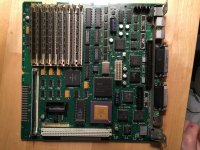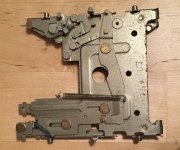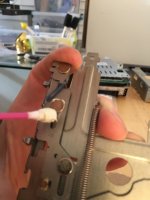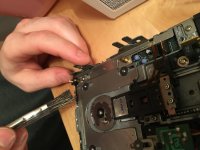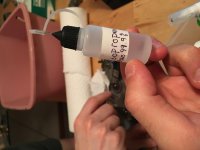ZaneKaminski
Well-known member
I recently picked up 15 or 20 old Macs, including 4 compact models. I've now got an SE/30 that appears to be in great condition, but others are in pretty dire condition.
Here's my SE/30. HDD doesn't work and I don't have a boot floppy, but the capacitors look okay and no battery acid on the board. I will come back to this one eventually, but the others require more immediate attention.

Here's the board of one Plus. Battery was leaking along the side of the chassis, and so the board has some corrosion. Some of the capacitors are leaking too.
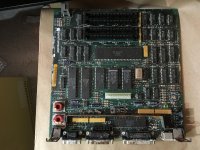
Now look at this SE... I bought it knowing it was like this. The damage to the board is really extensive, but I'd like to clean it and give it a try anyway.
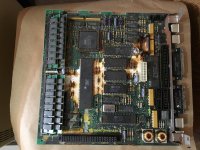
Alright, isopropanol strikes me as the right thing to use, but the common suggestion is to use mostly water. I guess if you can dry it thoroughly? I think I'd like to use mostly isopropanol. I've got a lot and I go through it regularly. So when using mostly isopropanol, I should still add the ammonia to neutralize any battery acid, right? I figured I should remove the large chunks of acid from the SE board before soaking, but should I try and put ammonia on it first, and then soak in the isopropanol? There's a lot of it on the board and I don't want it to spread while soaking.
Any other advice on cleaning a board with so much battery acid? I mean, I figure the SE is probably never going to work, but I wanted to try anyway. The Plus on the other hand looks like I can fix it easily.
I will post more pictures and document the repair work for others to see. Soon I will assess the condition of my other Plus and IIcx.
Here's my SE/30. HDD doesn't work and I don't have a boot floppy, but the capacitors look okay and no battery acid on the board. I will come back to this one eventually, but the others require more immediate attention.

Here's the board of one Plus. Battery was leaking along the side of the chassis, and so the board has some corrosion. Some of the capacitors are leaking too.

Now look at this SE... I bought it knowing it was like this. The damage to the board is really extensive, but I'd like to clean it and give it a try anyway.

Alright, isopropanol strikes me as the right thing to use, but the common suggestion is to use mostly water. I guess if you can dry it thoroughly? I think I'd like to use mostly isopropanol. I've got a lot and I go through it regularly. So when using mostly isopropanol, I should still add the ammonia to neutralize any battery acid, right? I figured I should remove the large chunks of acid from the SE board before soaking, but should I try and put ammonia on it first, and then soak in the isopropanol? There's a lot of it on the board and I don't want it to spread while soaking.
Any other advice on cleaning a board with so much battery acid? I mean, I figure the SE is probably never going to work, but I wanted to try anyway. The Plus on the other hand looks like I can fix it easily.
I will post more pictures and document the repair work for others to see. Soon I will assess the condition of my other Plus and IIcx.
Last edited by a moderator:

